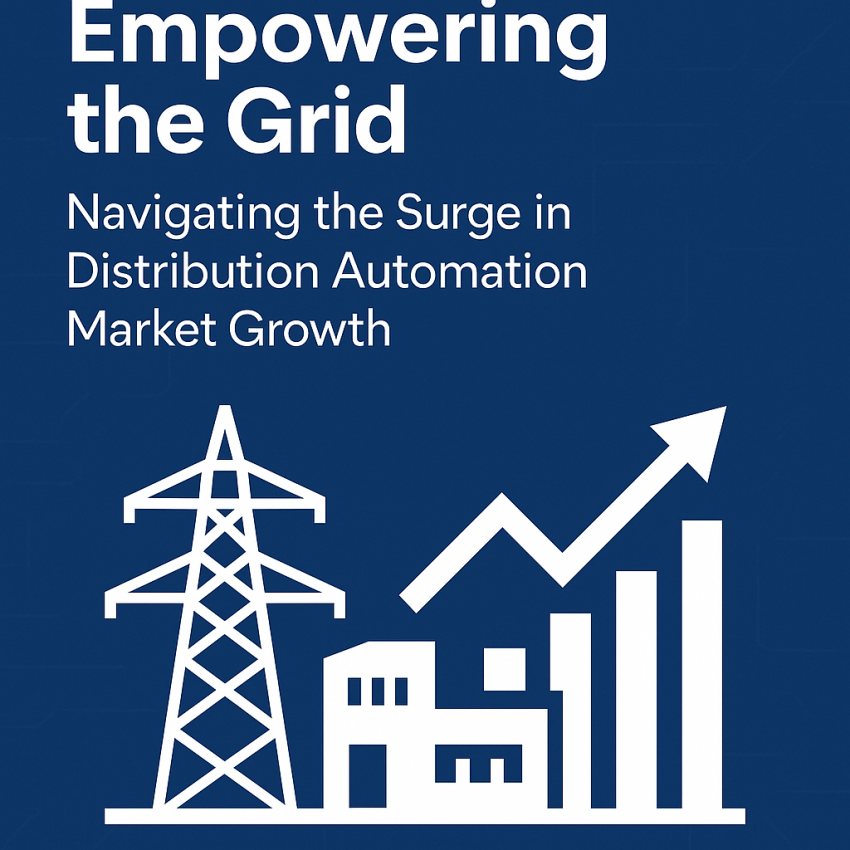The global energy landscape is undergoing a transformative shift, driven by the imperative for smarter, more resilient, and efficient power distribution systems. At the forefront of this evolution is the Distribution Automation (DA) market, which is poised for significant growth in the coming years. According to MarketsandMarkets, the DA market is projected to expand from USD 20.56 billion in 2025 to USD 40.40 billion by 2030, reflecting a robust Compound Annual Growth Rate (CAGR) of 14.5% .
Understanding Distribution Automation
Distribution Automation refers to the integration of advanced technologies and systems that enable real-time monitoring, control, and optimization of electrical power distribution networks. It encompasses a range of components, including field devices, communication technologies, and software solutions, all working in concert to enhance grid reliability, efficiency, and responsiveness.
Download PDF Brochure – https://www.marketsandmarkets.com/pdfdownloadNew.asp?id=65029172
Key Drivers of Market Growth
1. Smart Grid Initiatives
The global push towards smart grid infrastructure is a primary catalyst for DA adoption. Smart grids address challenges like aging infrastructure and increasing energy demand by integrating real-time monitoring systems, decision-making algorithms, and control mechanisms. DA plays a crucial role in these systems by providing real-time operational data, which enhances decision-making and operational efficiency .
2. Technological Advancements
Innovations in artificial intelligence (AI), the Internet of Things (IoT), and advanced metering infrastructure are revolutionizing DA systems. These technologies enable predictive maintenance, real-time fault detection, and seamless integration with renewable energy sources, thereby improving grid resilience and reducing operational costs .
3. Government Policies and Investments
Governments worldwide are investing heavily in grid modernization to ensure a reliable and sustainable energy supply. Policies promoting energy efficiency and the integration of renewable energy sources are driving the adoption of DA technologies, particularly in developing countries where energy demand is rapidly increasing .
Market Segmentation Insights
By Offering: Field Devices Lead
Field devices, including smart sensors, automatic switches, and voltage regulators, are expected to dominate the DA market. Their ability to provide real-time data and automate grid operations makes them indispensable for modern utilities aiming to enhance reliability and reduce outage durations .
By Communication Technology: Wireless on the Rise
Wireless communication technologies are projected to experience the fastest growth within the DA market. Their advantages—such as flexibility, scalability, and cost-effectiveness—make them ideal for retrofitting existing grids and extending services to remote areas. Advancements in 5G and low-power wide-area networks (LPWAN) further bolster their appeal .
By Utility Type: Private Utilities Accelerate
While public utilities currently hold a larger market share, private utilities are anticipated to grow at a faster rate. Their agility in adopting new technologies and making strategic investments positions them at the forefront of DA implementation .
Regional Outlook: Asia-Pacific Leads
The Asia-Pacific region is poised to be the largest and fastest-growing market for DA solutions. Rapid urbanization, population growth, and significant investments in grid expansion projects in countries like China, Japan, and South Korea are driving this trend. These nations are also leading the charge in integrating renewable energy sources, further necessitating advanced DA systems .
Make an Inquiry – https://www.marketsandmarkets.com/Enquiry_Before_BuyingNew.asp?id=65029172
Challenges Ahead
Despite the promising growth, the DA market faces challenges, notably the high initial investment costs associated with infrastructure installation. Implementing DA systems requires substantial capital for purchasing and integrating components like SCADA systems, communication networks, and smart field devices. These costs can be a barrier, especially for utilities in developing regions .

